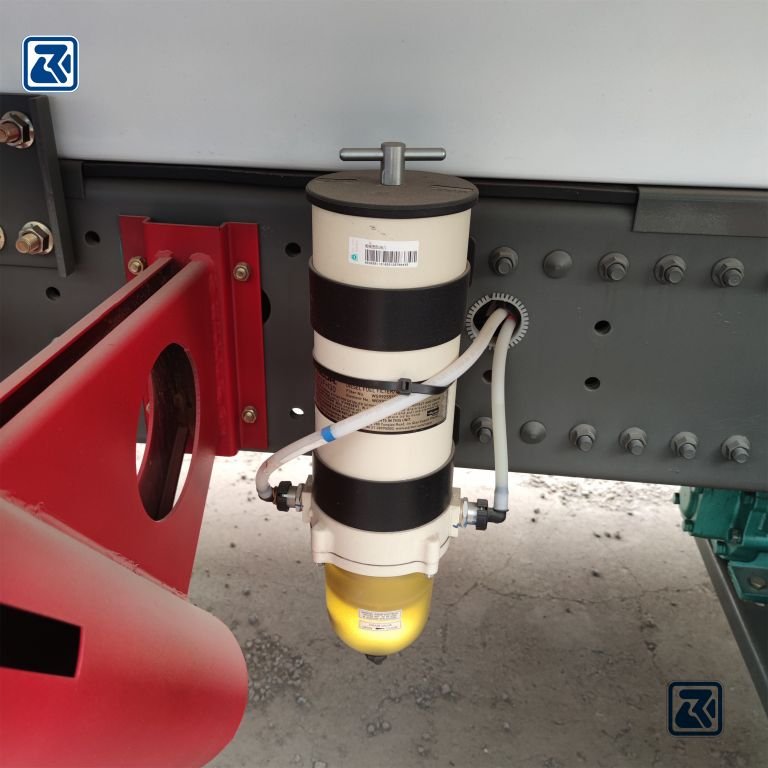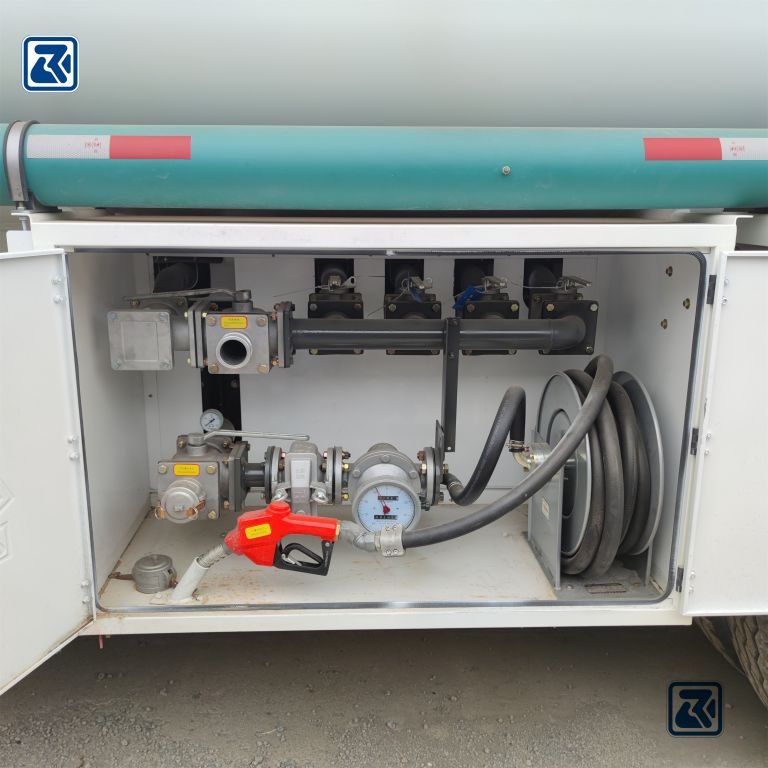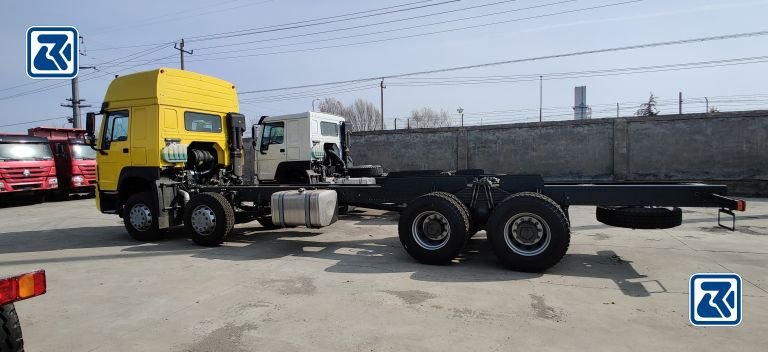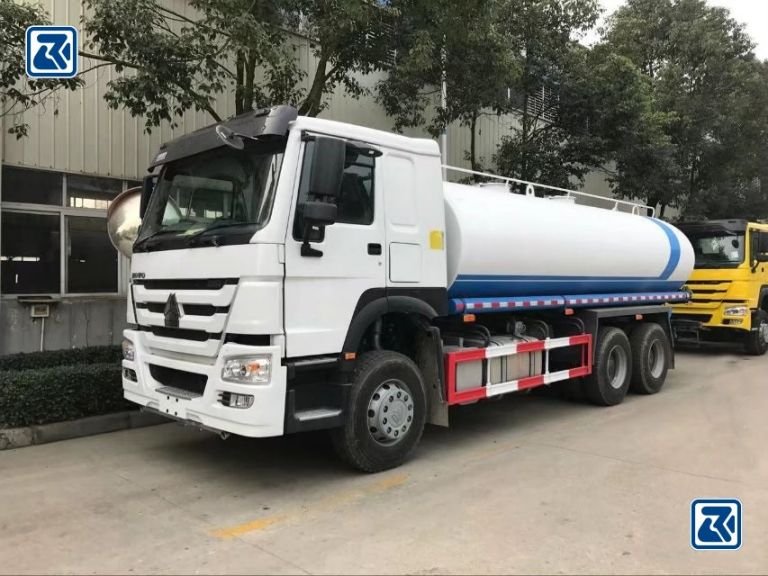HOWO tank truck is a heavy-duty truck for oil transport. It can be used in the industry and logistics field. These trucks have large tanks and strong engines for fast oil transport.
Safe oil transport is crucial for the petroleum industry. Knowing the HOWO tank trucks’ reward system is essential. It ensures oil is moved safely and efficiently.
The truck’s oil tank refueling system needs strict rules. These rules ensure oil transport is safe and efficient. Operators must understand how the system works and follow the right steps.
They should connect the oil nozzle correctly to avoid leaks. Regular checks of the system are also important. This includes checking pipes and valves for any signs of leaks.
The relieving system of HOWO tank trucks is key to safe transport. Proper operation and maintenance are vital. This is important for the oil industry’s growth and the economy’s stability.
Knowing about the safety features of HOWO tankers helps ensure safety during transport. This is crucial for haulage companies and operators.
Table of Contents
Overview of HOWO Tank Truck Refueling System
The HOWO tanker refueling system is a system designed to supply fuel to tanker trucks. The system is designed to ensure a safe and efficient refueling process. The refueling system consists of the following main components:
Fuel Tank: The fuel tank is a container for storing fuel and is usually located at the rear of the tanker truck. It has sufficient capacity to hold a large amount of fuel and is designed to be leak-proof to ensure that fuel does not escape.
Fuel Pump: The fuel pump is the device that pumps fuel from the fuel tank and feeds it into the engine of the tanker truck. It uses electrical or mechanical force to create pressure and ensure the fuel flows smoothly.
Filter: A filter is a device installed between the fuelling pump and the fuel tank to filter impurities and particles from the fuel. This helps to protect the engine from contamination and ensures the purity of the fuel.
Valves and Pipes: The refueling system also includes a series of valves and pipes that control the flow and transfer of fuel. These valves and pipework are carefully designed to ensure that fuel is delivered to its target location safely and efficiently.
During refueling, operators must follow strict procedures. These procedures ensure the system’s safety. Also, the system should be efficient. This way, refueling is fast and work efficiency improves.
HOWO tanker truck refueling systems are designed to be safe and efficient. They use components such as fuel tanks, pumps, filters, valves, and piping. The systems are designed with procedures. They ensure that tanker trucks can be refueled smoothly. This protects the operator and the environment.
Preparation before refuelling
Proper preparation before refueling is crucial. Here are some steps to take:
Check all equipment and refueling ports of the tanker: Make sure everything works. This includes pumps, filters, and valves. Also, check that refueling ports are clean and connected right.
Confirm the type and quantity of oil: Before refueling, check the oil type and amount. This avoids mistakes. Make sure you understand the oil’s specifications.
Ensure the safety of the refueling area: Before refueling, check the area’s safety. Look for ignition sources and hazardous materials. Make sure there are no open flames or static electricity. Also, ensure good ventilation to prevent fire or explosion.
Ensure cleanliness of the refueling area: Keep the area clean. Remove debris, oil, and obstructions. This reduces accident risk and ensures a safe environment.
Prepare the necessary safety equipment: Before refueling, have the right safety gear. This includes gloves, goggles, and clothing. It protects you from chemical spills or injuries.
By following these steps, you can ensure a safe and smooth refueling process. These preparations reduce accident risk and ensure the correct oil amount. Always prioritize safety by following the right rules and procedures.
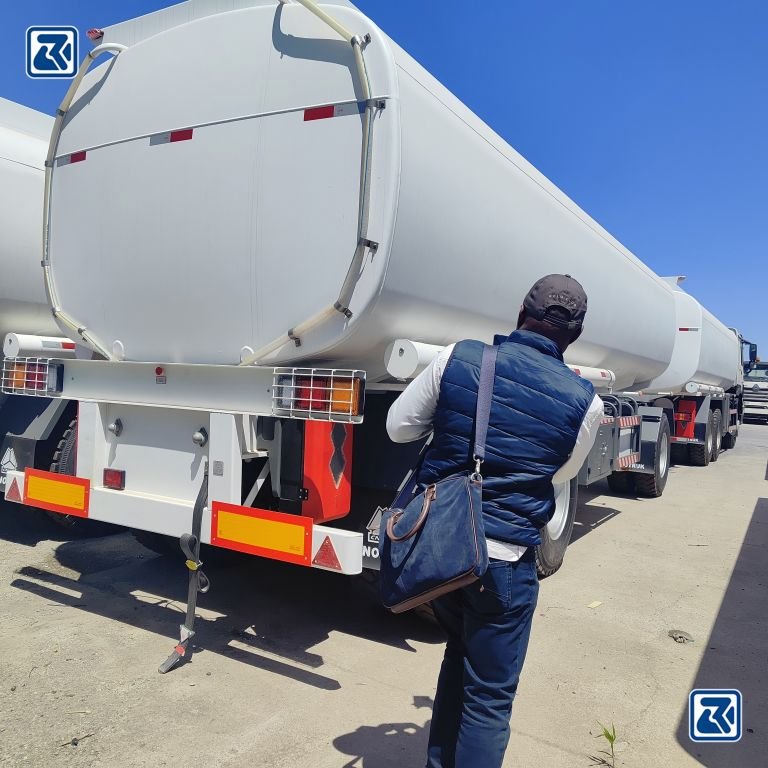
Refuelling steps in detail
Before explaining the refueling procedure, make sure all preparations are done. This includes safety checks, equipment checks, oil confirmation, and preparing the refueling area.
Connecting the fuel line correctly is key. First, find the connection between the tanker and the refueling station. Make sure they are aligned. Then, gently insert the fuel line, ensuring it’s fully inserted and sealed. Check for any signs of leakage. If you see any, stop refueling and adjust or tighten the fuel line.
Starting the fuel pump involves a few steps. First, turn on the power supply of the tanker. Then, find and switch on the fuel pump’s switch. Make sure the suction port is at 1/3 of the oil level inside the tank.
This position helps the pump work efficiently and keeps the oil quality good. Once the pump is on, it starts pumping oil into the refueling hose. This oil is then delivered to the refueling point. Listen to the pump while it’s working. It should run smoothly without any unusual sounds.
It’s crucial to monitor the fuel amount during refueling. Tanker trucks use an oil gauge for this. The gauge is connected to the refueling pump and shows the oil level. You can also check the oil flow rate to see if the refueling is going as planned.
For large refueling jobs, use a refueling indicator or an oil gauge on the tanker. These tools provide accurate measurements. This ensures the right amount of fuel is being used.
Safety is always the top priority during refueling. Always follow safety instructions to meet all rules and standards. After refueling, check the fuel line connections for leaks. Then, turn off the fuel pump and tanker. Finally, clean up the area to keep it tidy.
Safety checks after refueling
After refueling, it’s important to do safety checks. Here are some key steps:
Disconnect The Fuel Line: Before taking off the refueling line, make sure the fuel gun is off. Also, check there’s no pressure left. Rotate the fuel line fitting to remove it from the vehicle’s filler neck. Be careful not to spill or leak oil during removal.
Inspect The Tank And Fuel Line: Check the tank and fuel line for any leftover oil or leaks. Make sure the tank’s seal is tight and there are no cracks or leaks. Also, look at the oil lines for any damage or wear. If you find any issues, fix or replace them right away.
Clean the refueling area: After refueling, clean the area well to remove oil or debris. Use the right cleaners and tools to clean the floor. Dispose of any greasy items properly. This helps prevent slips and fires.
Doing safety checks after refueling is key to ensuring a safe process. Follow the right steps to disconnect fuel lines. Check the condition of tanks and fuel lines. Also, clean the area well. This reduces safety risks and makes refueling smooth.
Common problems and solutions
Common problems and solutions are crucial in refueling. This is especially true for oil spills and equipment failures. Here are some common issues and how to solve them:
Oil leakage: Oil spills can pollute the environment and pose safety risks. If you see an oil spill, stop refueling right away. Then, tell the petrol station staff as soon as you can. They will handle the leak and clean up the area.
Equipment Failure: Equipment problems can cause interruptions or safety issues during refueling. If equipment malfunctions, stop refueling and tell the station staff. They will check the equipment and fix it or find an alternative. This ensures safe refueling.
Emergency Measures: In emergencies, take the right steps to protect yourself and others. If there’s a fire or other emergency, stay calm. Leave the area quickly and avoid dangerous places. Call the police and follow their instructions.
Safety Precautions
Here are some safety tips for refueling:
Wear protective gear: Always wear protective clothing, safety shoes, and goggles when refueling. This gear helps prevent injuries and hazards.
Avoid ignition sources: Stay away from anything that could start a fire, like open flames or lighters. Static electricity and gases can ignite during refueling. So, keep a safe distance.
Follow safety rules: Always follow the safety rules and procedures at the petrol station. This includes using refueling appliances correctly and not overfilling the container. These steps help avoid accidents.
Check equipment regularly: Make sure the refueling equipment works well. Check fuel guns and hoses often. Also, keep the station clean. These steps prevent safety hazards.
Learn emergency procedures: Know how to handle emergencies at the petrol station. Find the location of emergency equipment. Quick and correct action is crucial in case of a fire or spill.
Maintenance of HOWO tanker trucks
Keeping your HOWO tanker truck in good shape is crucial for safety and performance. Here are some maintenance tips:
Regularly check the refueling system: The refueling system is key. Check for leaks and replace filters and seals as needed. Also, ensure the oil pump and fuel gauge work well.
Change oil and filters regularly: Regular oil and filter changes keep your engine running smoothly. Change the oil as recommended and use the right oil viscosity. Filters should be changed based on usage and the manufacturer’s advice.
Take care of your tires: Regularly check tire wear and air pressure. Proper air pressure and even tire wear improve handling and fuel efficiency. Rotate and balance tires as needed.
Inspect the brakes: The brake system is critical for safety. Check brake pads, discs, and fluid regularly. Replace brake pads when they’re worn out.
Keep the electrical system in check: Regularly inspect the electrical system, including the battery, generator, and wiring. Ensure the battery is charged, the generator works, and wiring is secure.
Summary
Specialist tanker manufacturers offer maintenance services and support. It’s important to follow their maintenance schedules. Their technicians can provide expert repair and troubleshooting. Regular maintenance and timely oil and filter changes are essential. Also, keep tires and brakes in good condition and check the electrical system often. These steps ensure your tanker truck operates well. With HOWO Special Truck Ltd.’s services, any issues can be fixed promptly, extending your tanker’s life.
FAQ
Stop the vehicle and switch off the engine.
Open the fuel cap of the tanker.
Use a suitable tool to open the refueling gun.
Insert the refueling gun into the tank opening and make sure it is firmly inserted.
Press the refueling switch on the refueling gun to start refueling.
When refueling is complete, release the refueling gun switch and slowly pull the refueling gun out.
Close the fuel tank cap.
Make sure the vehicle is parked in a level and safe place, away from open flames and flammable materials.
Do not smoke or use an open flame while refueling.
Switch off the engine and other electronic equipment to avoid electrical sparks that could cause a fire.
Make sure that the refueling gun and tank opening are clean and avoid spilling oil.
Check that the refueling gun is correctly inserted and tightened.
Make sure the fuel tank cap is properly closed.
Check the fuel tank for signs of leakage or damage.
If the problem persists, contact the technical support team at HOWO Special Truck Ltd. for assistance.
Technical advice and support: A team of pros can answer questions about the HOWO tanker refueling system. They can also help with related issues.
Repair and maintenance services: provide repair, maintenance, and inspection services for tanker trucks.
Spare parts supply: Provide original or authorized spare parts to ensure that the tanker trucks are kept in good condition.
Training service: The training for users and teams covers using and maintaining tanker trucks. It ensures safe and efficient operation.



